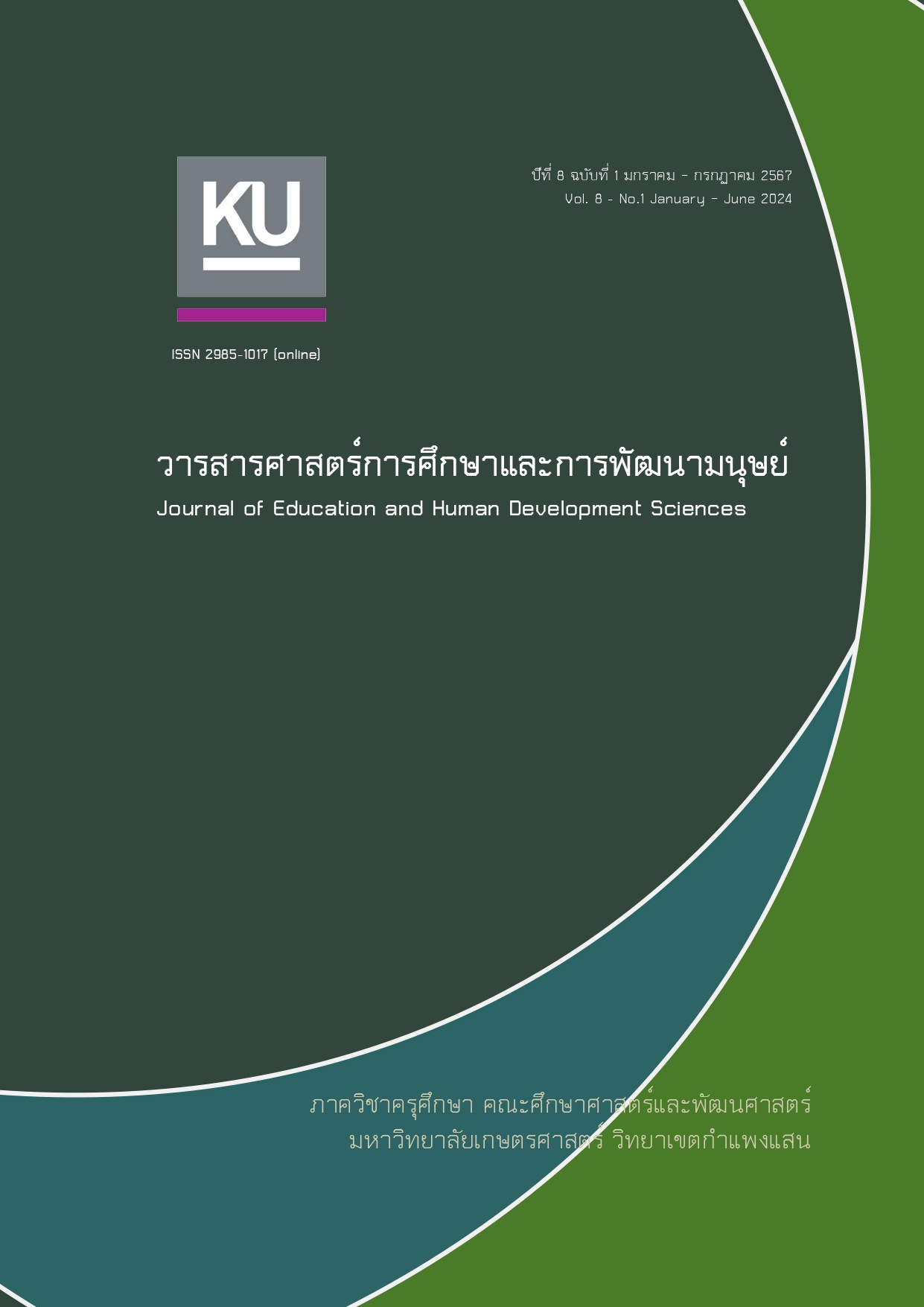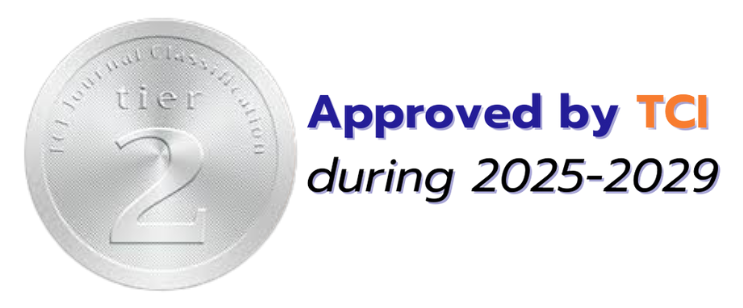การพัฒนาการอ่านเพื่อความเข้าใจของนักเรียนชั้นประถมศึกษาด้วยวิธีการตั้งคำถามตนเองร่วมกับเทคนิคเควสชั่นฟอมูเลชั่น
คำสำคัญ:
การตั้งคำถามตัวเอง, การอ่านเพื่อความเข้าใจ, นักเรียนประถมศึกษาบทคัดย่อ
การวิจัยครั้งนี้ มีวัตถุประสงค์พัฒนาการอ่านโดยเปรียบเทียบความสามารถในการอ่านเพื่อความเข้าใจของนักเรียนประถมศึกษาก่อนและหลังทดลอง ภายหลังจากการเรียนรู้ด้วยวิธีการตั้งคำถามตนเองร่วมกับเทคนิคเควสชันฟอมูเลชั่น กลุ่มตัวอย่าง ได้แก่ นักเรียนชั้นประถมศึกษาปีที่ 6/2 โรงเรียนเอกชน ปีการศึกษา 2566 จำนวน 36 คน ซึ่งได้มาจากการเลือกแบบเจาะจง (Purposive Selection)
เครื่องมือที่ใช้ในการวิจัย ประกอบไปด้วย 1) แผนการจัดการเรียนรู้โดยใช้วิธีการอ่านด้วยการตั้งคำถามตนเองร่วมกับเทคนิคเควสชันฟอมูเลชั่นเรื่องการอ่านเพื่อความเข้าใจ จากการให้คะแนนของผู้เชี่ยวชาญจำนวน 3 คน หาค่าความตรงเชิงเนื้อหาเท่ากับ 1.00 2) แบบทดสอบเกี่ยวกับการอ่านเพื่อความจากการให้คะแนนของผู้เชี่ยวชาญจำนวน 3 คน หาค่าความตรงเชิงเนื้อหาเท่ากับ 0.67 วิเคราะห์ข้อมูลโดยค่าเฉลี่ยเลขคณิต ( ) ค่าส่วนเบี่ยงเบนมาตรฐาน (SD) และวิเคราะห์ความแตกต่างของค่าเฉลี่ยคะแนนการอ่านเพื่อความเข้าใจทั้ง 4 ระดับ ได้แก่ ระดับการอ่านตามตัวอักษร ระดับการอ่านตีความ ระดับวิจารณญาณ และระดับการนำไปใช้หรือการประยุกต์ใช้ โดยการทดสอบค่า t ของกลุ่มตัวอย่างที่ไม่เป็นอิสระต่อกันที่ระดับนัยสำคัญทางสถิติที่ระดับ .05
ผลการวิจัยพบว่า คะแนนเฉลี่ยรวมของการอ่านเพื่อความเข้าใจ และคะแนนเฉลี่ยของคะแนนการอ่านเพื่อความเข้าใจ ประกอบด้วย ระดับการอ่านตามตัวอักษร ระดับการอ่านตีความ ระดับวิจารณญาณ หลังการทดลองสูงกว่าก่อนทดลองอย่างมีนัยสำคัญทางสถิติที่ระดับ .05 และคะแนนเฉลี่ยระดับการนำไปใช้หรือการประยุกต์ใช้หลังการทดลองสูงกว่าก่อนการทดลองอย่างไม่มีนัยยะสำคัญทางสถิติที่ระดับ .05
##plugins.generic.usageStats.downloads##
เอกสารอ้างอิง
Atchara Pradit. (2007). Inviting Thai children to become readers. (1st ed.). Bangkok: Learning Park
Office.
Bloom, B.S., Engelhart, M.D., Furst, E.J., Hill, W.H., & Krathwohl, D.R. (1956).
Taxonomy of Educational Objectives, Handbook I: The Cognitive Domain. New York: David
McKay Co Inc.
Bromley, K. (1992). Language arts: Exploring connections. Boston: Allyn and Bacon.
Brown, A. L. (1983). The development of plans for summarizing texts. Child Development.
https://eric.ed.gov/?id=EJ285717.
Christine, C. (2008). Students' questions: a potential resource for teaching and learning
science. https://doi.org/10.1080/03057260701828101.
Janya, K. (2018). Effect of Instruction Using KWHLAQ Stagey on Reading Comprehension and the
Reading Habits of Seventh Grade Students [Master dissertation, Srinakharinwirot University].
Jirawan, I. (2011). Effects of Thai literature teaching using multi-part strategy on reading
comprehension ability, academic essay writing, and Thai literature learning achievement of
eighth grade students. [Master dissertation, Chulalongkorn University].
Jurairat, L. (2013). Thai language for communication (2nd ed). Nakhon Pathom: Silpakorn University
Press [translated].
Kamolpan Prasertsilp. (2022). the effect of using SQ6R technique and authentic materials for
improving grade six student’ reading comprehension skill.
McCallum, Mezher, Skinner & Hilton-Prillhart. (2011). Improving reading comprehension of at risk
high school students: The ART of reading program. Psychology in the Schools, 48(1), 78-86.
https://www.researchgate.net/publication/230115453_Improving_reading_comprehension_of_at-
risk_high-school_students_The_ART_of_reading_program
Miller, W. (1990). Reading comprehension activities kit. The United State of America: The Center for
Applied Research in Education.
Ministry of Education. (2022). Reading according to PISA "Reading for learning".
https://oer.learn.in.th/search_detail/ZipDownload/20155. [tranlated]
Piaget, J. 1970. Science of Education and the Psychology of the Child. New York: Orion Press.
Pattrada, I. (2021) The Teaching of Reading Analysis Via Active Learning for Developing Critical Thinking Skills of Thai Children on the Gen Z Era [Master dissertation, Burapha University].
Riley, V.M. (1991). Teacher’s Questioning for Improvement of Critical Thinking Skills.
Dissertation Abstract International [Doctoral dissertation, University of Wisconsin].
Rothstein. (2011). Make Just One Change: Teach Students to Ask Their Own Questions.
The United State of America: Harvard Education Publishing Group.
Saijai, T. (2017) . Thai language for communication. (1st ed.). Bangkok: Se-Education.
Sumalee, C. (2019). Effect of using Think Pair Share Technique with Graphic Organizer
on Thai Language reading Comprehension of fifth Grade Students [Master dissertation,
Chulalongkorn University].
Waradee, C. (2018). Research on the process of developing the skills of asking questions to find
answers in a systematic way by teaching strategies over cognition according to the special
chef model for education students at Nakhon Ratchasima Rajabhat University. Ratchapruek
Journal, 16(1),132-138.
ดาวน์โหลด
เผยแพร่แล้ว
ฉบับ
บท
การอนุญาต
ลิขสิทธิ์ (c) 2024 วารสารศาสตร์การศึกษาและการพัฒนามนุษย์

This work is licensed under a Creative Commons Attribution-NonCommercial-NoDerivatives 4.0 International License.







